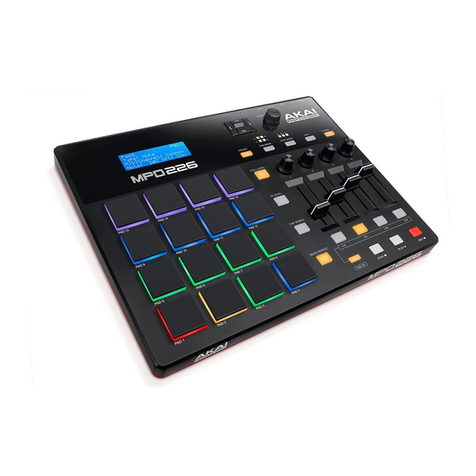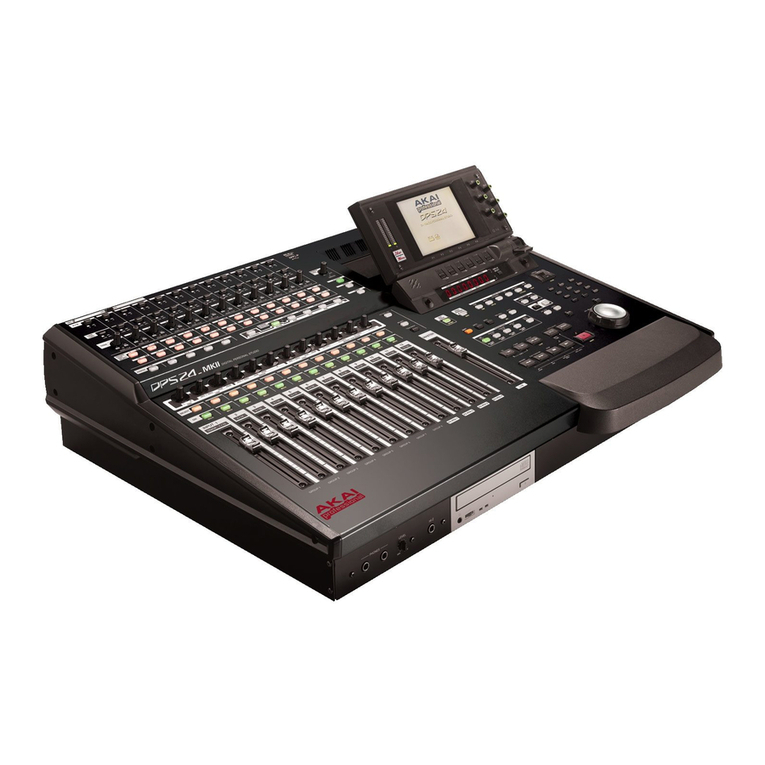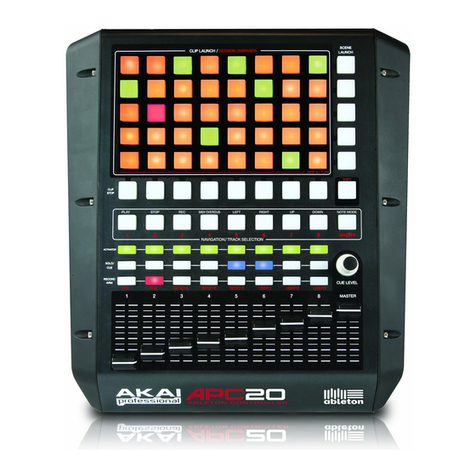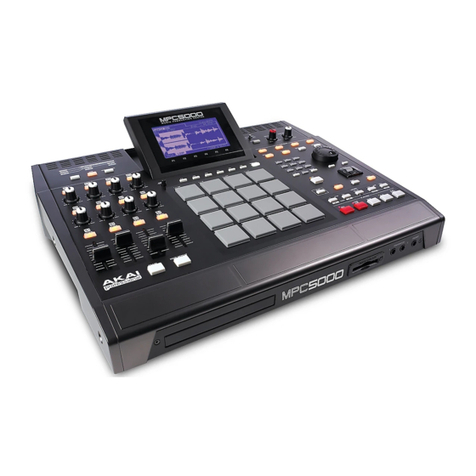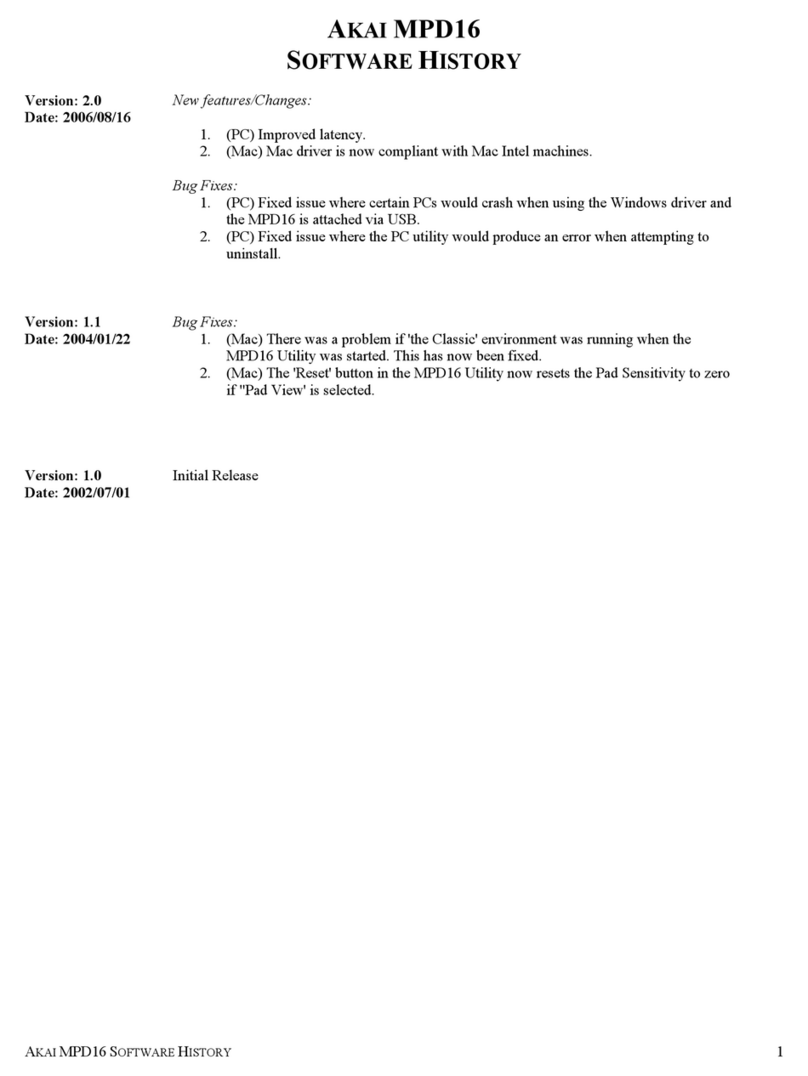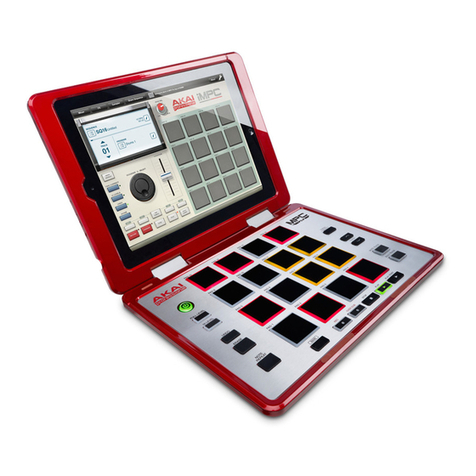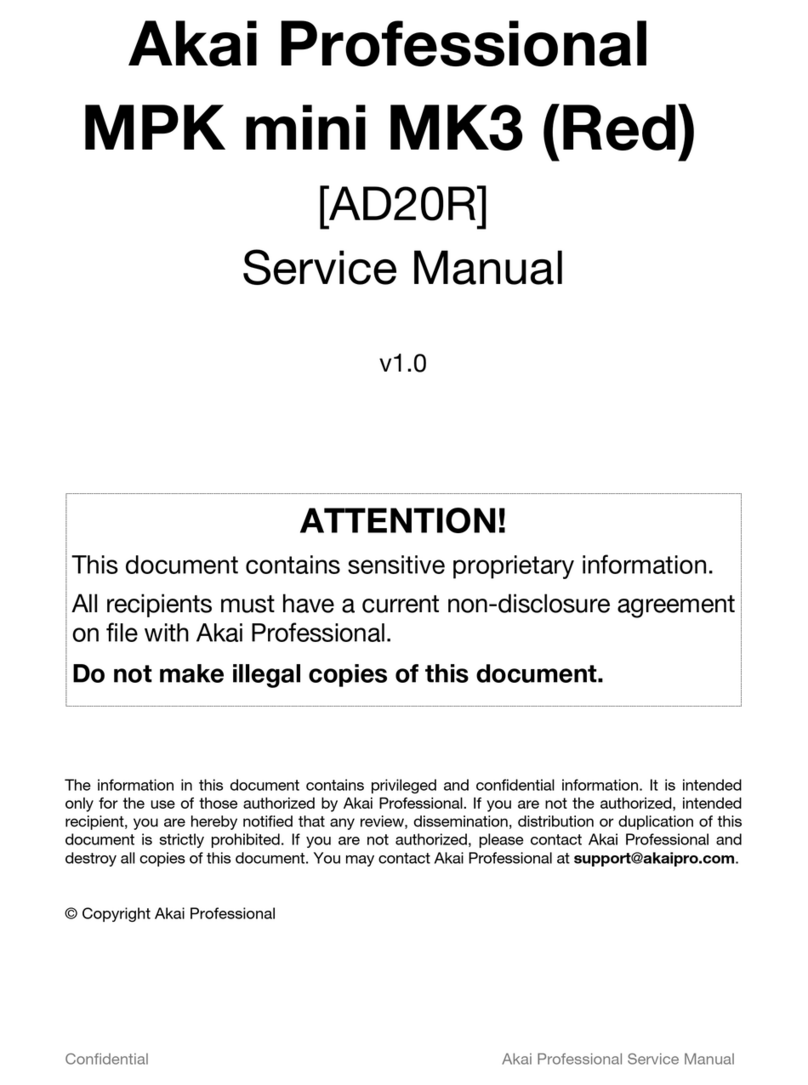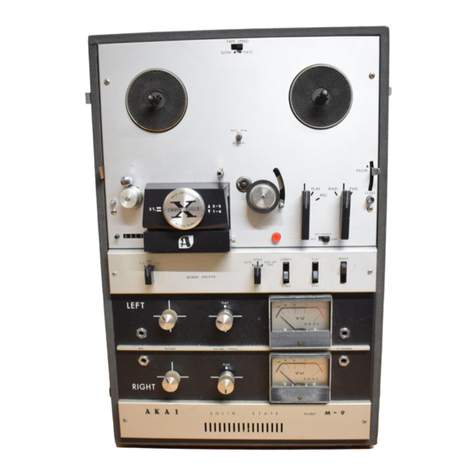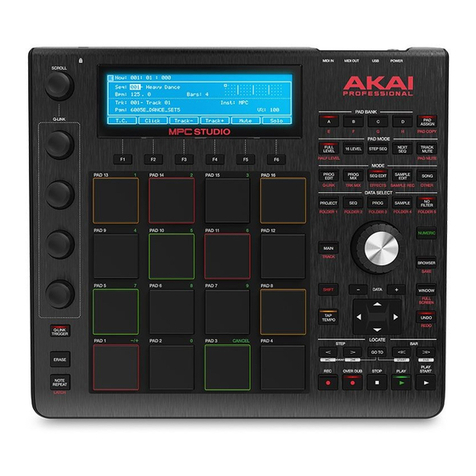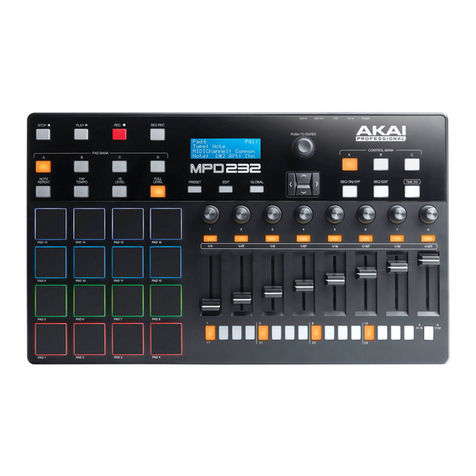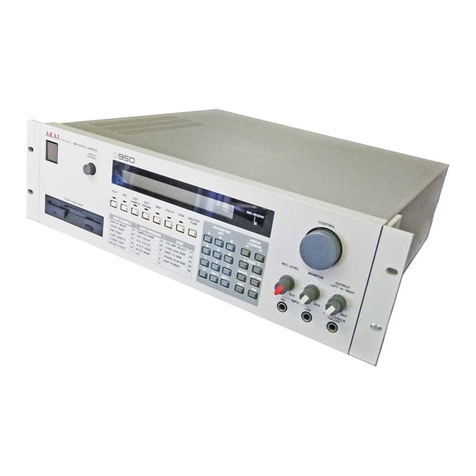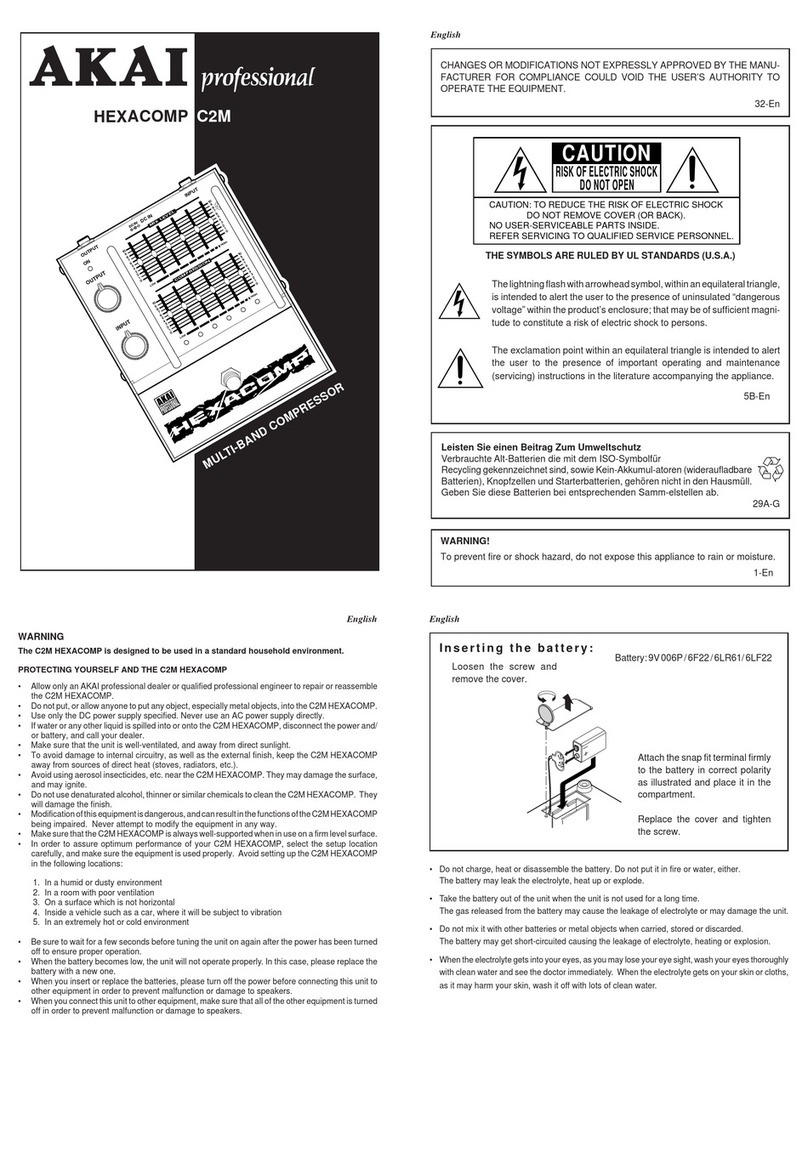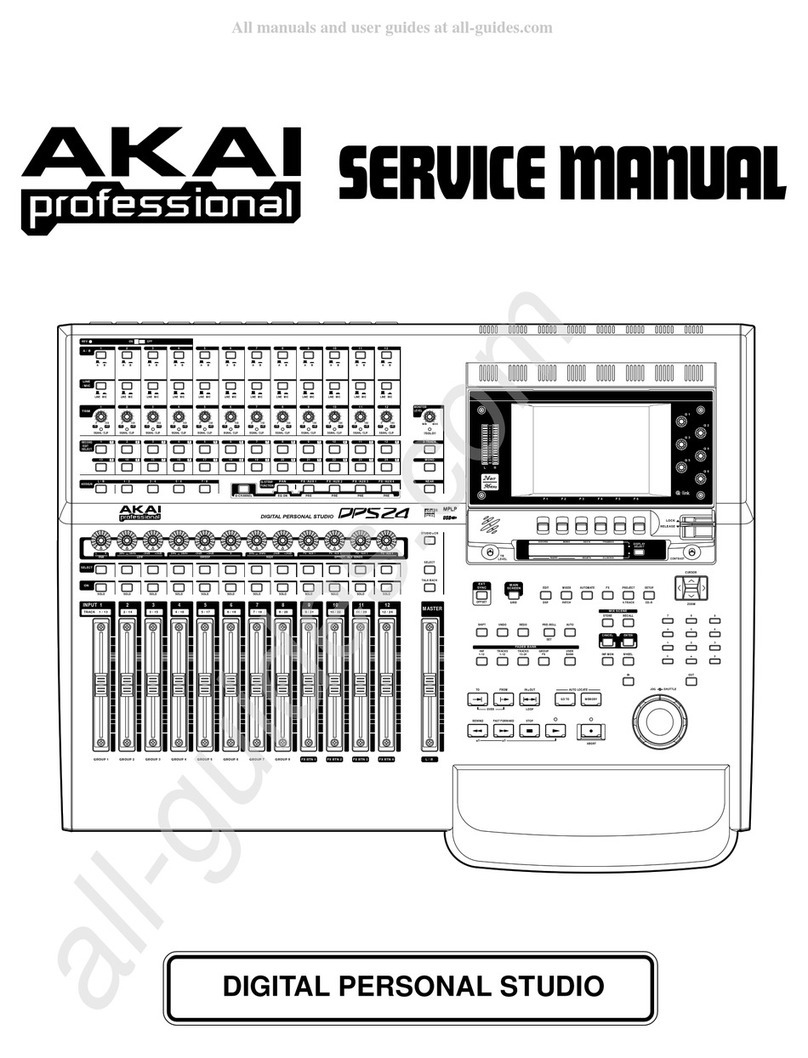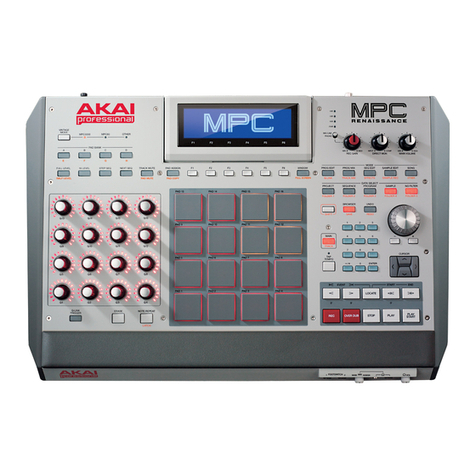vi Version 1.21
WARNING
s5000
/
s6000
SELECTING MULTIS REMOTELY VIA MIDI ....................................................................... 58
PART TOOLS MENU ........................................................................................................... 59
PROGRAM LIST....................................................................................................... 59
QUICKLOAD............................................................................................................. 69
QUICKSAVE ............................................................................................................. 75
USING MULTIS ....................................................................................................................75
USING MULTI MODE TO PLAY SINGLE PROGRAMS ........................................... 76
USING MULTI MODE TO PLAY LAYERED PROGRAMS........................................ 76
USING MULTI MODE TO PLAY KEYSPLITS........................................................... 77
USING MULTI MODE MULTI-TIMBRALLY............................................................... 77
PLAYING LIVE OVER ASEQUENCED BACKING TRACK ..................................... 78
USING THE S6000 AS TWO SAMPLERS ............................................................... 78
EDIT PROGRAM............................................................................................................. 80
EDIT PROGRAM ................................................................................................................. 80
EDIT PART........................................................................................................................... 80
OUTPUT .............................................................................................................................. 82
MIDI/TUNE........................................................................................................................... 86
EDIT USER............................................................................................................... 87
PITCHBEND ........................................................................................................................ 88
LFOS.................................................................................................................................... 89
LFO 2........................................................................................................................ 91
KEYGROUP......................................................................................................................... 95
SELECTING KEYGROUPS ................................................................................................. 97
KEYGROUP ZONES ........................................................................................................... 98
ZONE LEVEL WINDOW ......................................................................................... 101
PAN/BALANCE WINDOW ...................................................................................... 101
FINE TUNE WINDOW ............................................................................................ 102
PLAYBACK WINDOW ............................................................................................ 103
SELECTING AND EDITING ZONES ...................................................................... 104
KEYSPAN .......................................................................................................................... 105
KEYGROUP CROSSFADE................................................................................................ 106
KG PITCH/AMP ................................................................................................................. 107
FILTER ............................................................................................................................... 108
AMP ENVELOPE ............................................................................................................... 122
AMP ENVELOPE WINDOW FUNCTIONS............................................................. 123
FILTER ENVELOPE........................................................................................................... 124
AUX ENVELOPE ............................................................................................................... 125
AUX ENVELOPE WINDOWS................................................................................. 126
CREATING PROGRAMS................................................................................................... 127
CREATING (COPYING) KEYGROUPS ............................................................................. 127
PROG TOOLS MENU ........................................................................................................ 128
GET INFO ............................................................................................................... 128
PROGRAM LIST..................................................................................................... 129
QUICKLOAD........................................................................................................... 140
QUICKSAVE ........................................................................................................... 140
EDIT SAMPLE............................................................................................................... 141
EDIT SAMPLE ................................................................................................................... 141
MONITOR .......................................................................................................................... 141
MASTER ............................................................................................................................ 142
TRIM .................................................................................................................................. 145
CHOP................................................................................................................................. 148
LOOP ................................................................................................................................. 151
SETTING A GOOD LOOP ................................................................................................. 155
JOIN ................................................................................................................................... 157
MIX..................................................................................................................................... 160
FADE UP/DOWN ............................................................................................................... 162
TIMESTRETCH.................................................................................................................. 163
PITCH SHIFT ..................................................................................................................... 167
BPM MATCH ...................................................................................................................... 168
RE-SAMPLE ...................................................................................................................... 169
EQ ...................................................................................................................................... 170

